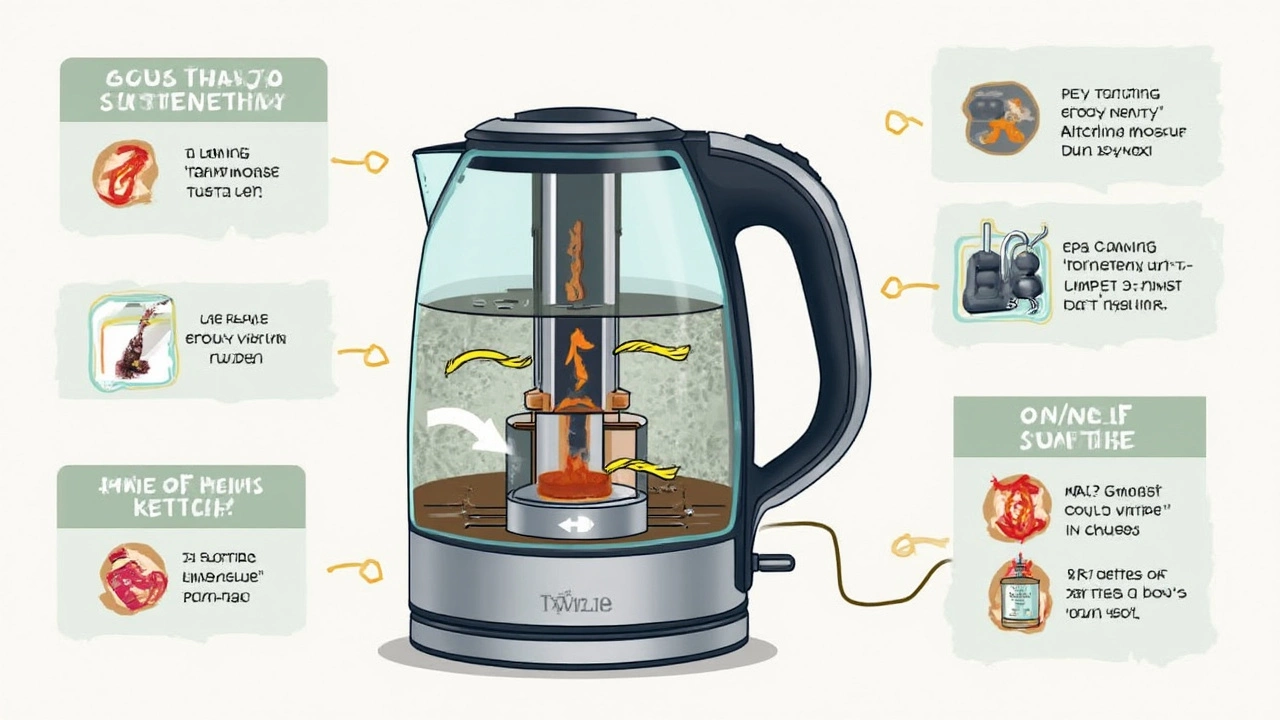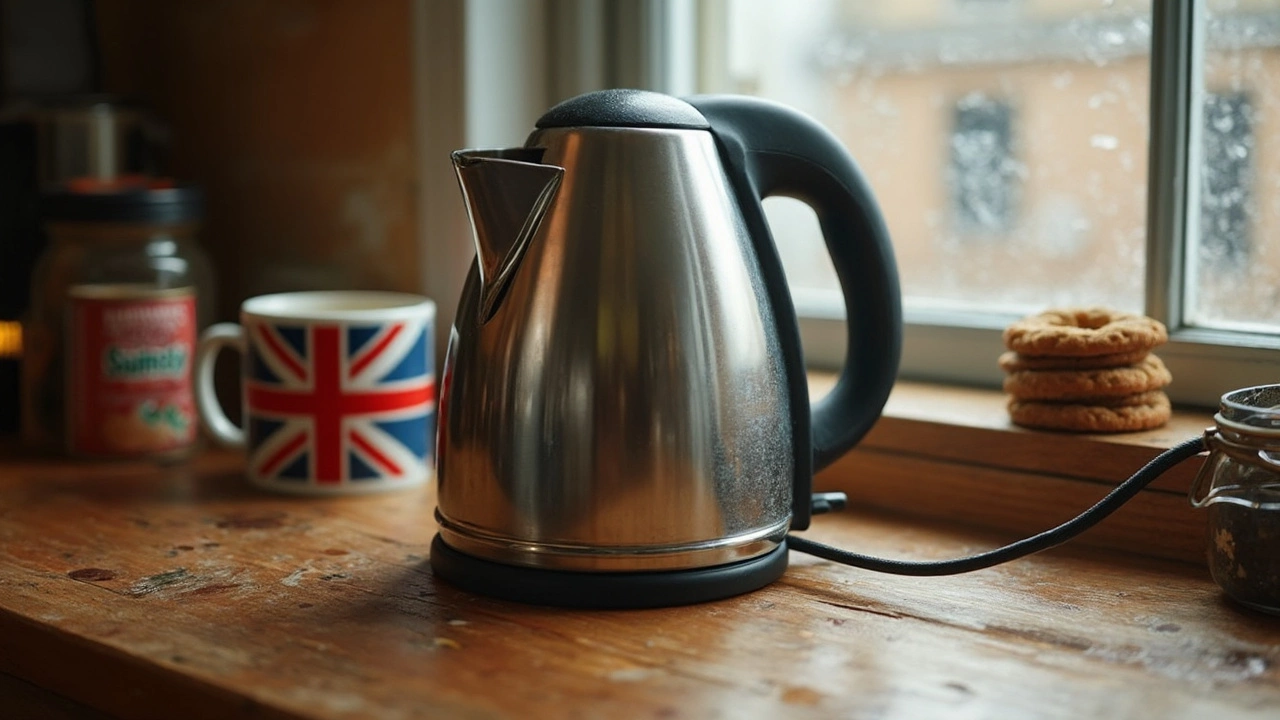Doesn’t it seem like some kitchen gadgets just give up the ghost overnight, while others keep plugging along for years? Electric kettles are used daily, sometimes more than once, so it’s normal to wonder how long one should actually last before you start hearing weird noises or see rust.
If you’re buying your first kettle or thinking of upgrading, it helps to know what you can realistically expect. Most electric kettles aren’t built to last forever, but with decent care you can squeeze three to five good years out of a typical model. Some people manage seven or more, often by sticking to basic habits that don’t take much effort.
The thing is, not all kettles are created equal. Pricey models from big brands might not always live up to the hype, and cheaper ones can sometimes surprise you. Materials, how often you use it, and the quality of your tap water all play a bigger role than you might guess. Hard water? You’ll want to know how that shortens kettle life—and what to do about it.
- Average Lifespan of Electric Kettles
- What Impacts a Kettle’s Life?
- Warning Signs Your Kettle is Dying
- How to Make Your Kettle Last Longer
- When It’s Time to Replace Your Kettle
Average Lifespan of Electric Kettles
So, when you’re eyeing a new kettle and asking, how long does an electric kettle last—the honest answer is usually around three to five years. That’s not just marketing talk. According to several home appliance surveys, most brands and models land smack in that range if you're using them for two to four boils a day.
Brands sometimes promise up to seven years, but in reality, only the tougher models or those used less often make it that far. Those made from stainless steel or good-quality plastic tend to outlast glass kettles, which are prone to cracks and leaks after a few years. And get this: a Consumer Reports review in 2023 tested over fifteen kettles by boiling water daily and tracked how long before key parts like the auto-shutoff stopped working or limescale build-up turned into a nuisance. The average time before any big problem popped up? Just over four years for mid-range models.
This table gives you a sense of what you’re up against depending on build and price:
| Material | Average Life Expectancy |
|---|---|
| Plastic (basic) | 2 - 3 years |
| Glass | 2 - 4 years |
| Stainless Steel | 3 - 6 years |
| High-End/Smart Kettles | 4 - 7 years |
Keep in mind, the way you use your kettle matters almost as much as what type it is. Someone using it for one morning cup will probably squeeze out a few more years than someone who’s making coffee, tea, and instant noodles for a household of five every day. And if you’re wondering about electric kettle durability, don’t just look at the price tag. Sometimes, simple models with fewer moving parts stick around the longest.
What Impacts a Kettle’s Life?
A bunch of things play into how long your electric kettle keeps going. Some you can control, others, not so much. Knowing what matters can help you stretch your kettle’s life and skip the frustration of buying a new one every year.
Build quality is the first deal breaker. Stainless steel and borosilicate glass kettles usually last longer than plastic ones. Those plastic parts can warp, crack, and even leach flavors into water after a few years. Metal kettles tend to resist heat damage and rust better, but quality (and price) still make a difference.
Then there’s how often you use your kettle. Brew tea or do instant noodles every few hours? Expect to replace it sooner than someone who only boils water once in the morning. Frequent heating-cooling cycles wear out the heating element. Nobody puts that on the box, but it’s a fact.
Water quality is a biggie—especially if you live in a hard water area. Those white limescale chunks that collect inside? They’re not just ugly, they actually coat the heating element, making your kettle work harder. That means higher bills and a kettle that poops out early unless you’re on top of descaling.
| Factor | Effect on Lifespan |
|---|---|
| Stainless steel build | Usually lasts longer |
| Daily use (3+ boils) | Shorter life (2-3 years) |
| Soft water | Longer kettle life |
| Regular cleaning | Makes kettle last longer |
| Neglect/descale rarely | Quicker breakdown |
How you treat your kettle matters too. It might seem harmless to leave boiled water sitting for hours or let scale build up “just one more month.” It’s not. Skipping regular cleaning shaves months, maybe years, off a kettle’s lifespan—and yes, that’s true whether you spend $20 or $120.
Finally, cheap switches or lids can jam or break way before the heating element fails. Sometimes a busted lid or wonky switch can kill a kettle that would otherwise last years. In short: material, usage, water quality, and basic care are what really determine how long your kettle hangs around. Keep these in mind next time you go shopping—or when you’re wondering if it’s worth saving your current one.

Warning Signs Your Kettle is Dying
If you use your kettle daily, you’ll probably notice when something is off. These gadgets usually don’t just stop suddenly—they throw you hints. Here’s what to watch for if you want to spot problems before you’re dealing with a dead kettle and cold tea.
- Strange Noises: If your kettle starts popping, crackling, or sounding louder than normal, something’s up. That’s often limescale or a heating element struggling to keep up.
- Slower Boiling Time: If you remember your kettle heating water in a snap, but now it’s so slow you could scroll TikTok twice before it clicks off, the heating element might be wearing out—or there’s a heavy layer of limescale sucking up the energy.
- Leaks or Dampness: Water where it shouldn’t be is a big red flag. If the base gets damp or you spot drips, don’t ignore it. You risk electric shocks or a fried kettle.
- Rust or Discoloration: Metal kettles shouldn’t have rust inside. If you see brown spots or weird corrosion, it’s not just ugly—it can mean your kettle is beyond saving.
- Switch or Lid Problems: If the button doesn’t click, the lid doesn’t seal, or the auto-shutoff stops working, it’s more than annoying. Bad switches are one of the most common causes of kettle replacements.
Here’s a quick look at the most common kettle problems people notice before buying a new one. This data is based on customer review analysis from three major kettle brands:
| Problem | Reported By (%) |
|---|---|
| Slow boiling | 48 |
| Leaks/drips | 35 |
| Malfunctioning switch | 27 |
| Rust/corrosion | 19 |
| Strange noises | 12 |
If you’re seeing any of these issues, don’t try to force your electric kettle to hang on. It’s rarely worth the risk, especially if water is leaking or the switch is acting up. Sometimes a little cleaning buys you more time, but when the problems pile up, it’s usually time to shop for a replacement.
How to Make Your Kettle Last Longer
If you want to squeeze the most out of your electric kettle lifespan, you don’t just leave it on the counter and hope for the best. A few regular habits make a huge difference in how long your kettle actually lasts.
Descale it regularly. Minerals from tap water (especially if you have hard water) build up fast. Over time, this gunk can coat the heating element and ruin efficiency. Most folks ignore this until the kettle starts taking forever to boil, but catching it early is easier. Pour in a mix of water and vinegar—about 50/50—let it sit for an hour, boil, then rinse. If that sounds like too much, products like descaling powders work too. Try to do this once a month, or more often if you spot white build-up.
- Wipe the inside dry after cleaning to prevent rust or mold in stainless steel models.
- Always empty the kettle after use, instead of letting water sit. Stale water means more mineral build-up and sometimes that weird smell nobody enjoys.
- Only fill as much water as you actually need. Constantly boiling to the max fill line puts extra strain on the element.
- Don’t boil anything but water unless you read in the manual that it’s okay. Stuff like soup, milk, or tea leaves mess up the heating plate fast.
Be gentle with the cord. Plugging and unplugging by yanking the cable can mess up the base or cause loose wires. Also, keep the base dry at all times to avoid short circuits or electric shocks—water plus electricity never ends well.
Here’s what proper care can do. Check out this basic table, based on survey stats from two popular home appliance forums:
| Cleaning Frequency | Average Kettle Life |
|---|---|
| Rarely/Never | 2 years |
| Every 3-6 months | 3 years |
| Monthly or Less | 4-6 years |
So, yeah, most people aren’t getting more years because they forget simple stuff. But a tiny bit of regular attention keeps that electric kettle humming along without weird taste or burnt smells. Your wallet will thank you later.

When It’s Time to Replace Your Kettle
No one wants to waste money tossing out a perfectly good appliance, but using an old or busted kettle can get annoying—and sometimes even risky. So how do you know your electric kettle lifespan is officially up?
Watch out for these clear signs:
- Longer boiling times: If waiting for water feels like forever now, it means the element could be worn out or coated in mineral gunk.
- Strange smells or tastes: Water tasting metallic or smelling burnt is a red flag. This often means the inside is rusting or plastic parts are breaking down.
- Visible rust, limescale or cracks: It’s not just ugly—cracks and lots of flaking limescale can let stuff leach into your water.
- Leaking water: If you spot puddles on the counter or the base, it’s time to stop using the kettle. Water and electricity are a bad mix.
- Sparking, popping, or unreliable switches: Hearing odd noises, seeing sparks, or struggling to get the kettle to stay on? That’s a sign of electrical failure. Using it this way can actually be dangerous.
Here’s a rough breakdown of how long electric kettles from different price ranges tend to last:
| Price Range | Average Lifespan (Years) |
|---|---|
| Budget ($20-40) | 2-3 |
| Mid-range ($40-80) | 3-5 |
| High-end ($80+) | 5-7 |
If your kettle is out of warranty and starts playing up, don’t risk it. Repairs on kettles rarely make sense—labor costs can quickly pass the price of a new model.
Don’t just focus on age. Even a kettle that’s only a couple years old can give out early if you have hard water, forget to descale, or use it constantly. At the same time, a basic kettle with gentle care and lucky water will sometimes keep going past expectations.
Bottom line: If you spot any of the warning signs above, or your kettle starts acting up after its typical electric kettle lifespan, there’s no shame in shopping for a replacement. You’ll enjoy faster, safer, and better-tasting hot water.

